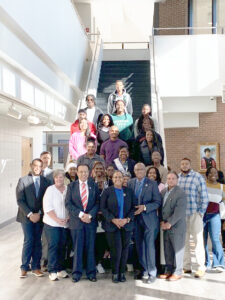By Tiffany Win
Finding the best people to join the Lab community is the goal of the Talent Outreach Program, designed to increase representation and retention of marginalized groups through outreach partnerships in three key areas: community, campuses, and conferences. Strategic partnerships with minority serving institutions (MSIs) across the U.S. offer Lab research and operations teams access to students and alumni highly suited for our internship programs, postdoctoral fellowships, and early career and professional job opportunities.
From October 2023 to March 2024, DOE’s Office of Science arranged a tour called Fostering Great Minds and Great Ideas. Selected participants visited 13 MSIs and two user facilities, meeting with university leadership, faculty, and students across STEM fields. Berkeley Lab Ambassadors accompanied Talent Outreach Program Manager Kelly Johnson, Office of Science leadership, and representatives from all national labs on these visits. Below are their experiences and thoughts about these visits and their value for the Lab’s mission.
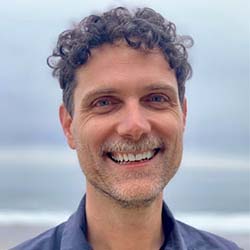
Andrew Jones, Earth Staff Scientist, Climate and Ecosystem Sciences Division, Earth and Environmental Sciences Area
Q: Where did you visit, and who did you meet with?
A: I was part of a delegation to historically Black colleges and universities (HBCUs) in Atlanta this past October. The Office of Science arranged this delegation with representatives and leaders from each of the national labs, and we met with dozens of university administrators, faculty, and nearly 200 students over two days at Spelman College, Morehouse College, Clark Atlanta University, and Fort Valley State University. We went into the faculty labs, attended networking sessions, and students presented posters. It was encouraging to be part of a multi-lab delegation to get a sense of the commitment from the Office of Science and all the laboratories to work with HBCUs.
Q: Why was this visit vital for you and your area’s goals?
A: This delegation was important for me because, as someone who works on climate change, I believe in the Lab’s team science mission. It’s abundantly clear to me that we need different expertise and life experiences to solve challenges. That is one reason why it’s important to broaden participation in science: to ensure that historically underrepresented groups are given a chance to participate.
Q: How do you think the Lab can further strengthen relationships with MSIs?
A: We made some tangible connections during this visit. We met and encouraged students to apply for internship programs and connected faculty to the visiting faculty fellowships available. I met some students interested in microbial biology, which isn’t my research area, but I connected them with people I know who are.
But overall, the most crucial thing the Lab can do is go to these institutions and listen. It’s important to understand what they want to get out of a relationship with an organization like the Lab and to build a foundation of trust so that we can pursue mutually beneficial opportunities when they arise.
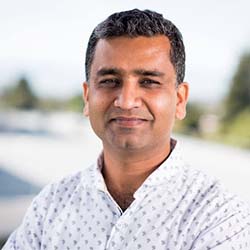
Vivek Mutalik, Staff Scientist, Environmental Genomics and Systems Biology, Biosciences Area
Q: Where did you visit, and who did you meet with?
A: I visited the University of Central Oklahoma and the University of Sciences and Arts of Oklahoma in January as part of the Fostering Great Minds and Great Ideas tour, led by [now former] Office of Science Director Asmeret Berhe and representatives from all the national labs. We were welcomed with such fanfare. We met the presidents of both universities as well as 30 members of the faculty. There must have been at least 50 to 100 students as well. After our roundtable discussions with faculty and students, we toured their facilities and met more students. These discussions were the tour’s highlight, as they allowed informal conversations around funding opportunities, synergies and partnerships in research, and opportunities for summer internships and faculty visiting programs.
Q: What did you take away from the experience?
A: The Fostering Great Minds and Great Ideas tour was a highly energizing and inspiring experience. In my interactions with faculty members and students, I realized that most were unaware of the DOE’s funding cycles, internship opportunities, faculty visiting programs, and, in general, the research conducted at the national laboratories. I sensed the excitement in sharing the information about Berkeley Lab and felt a sense of gratitude for being given this opportunity. We bring solutions to the most urgent problems faced by society, and I feel such a sense of pride in sharing all the different programs and activities at the Lab. I was happy to share information about various programs, such as the available fellowship programs and the different user facilities that can aid with research efforts.
Q: How do you think the Lab can further strengthen relationships with MSIs at the Lab?
A: As a staff scientist, I am most familiar with my research area, innovations, and programs in my field, and so I think it would be valuable to have different levels of leadership attend these kinds of visits so that they can speak to and build programmatic relationships. Another highlight of this visit was connecting with scientists in my area. We continued our conversations since our visit and plan to write a research proposal together. I have also initiated discussions around visiting fellowship paperwork so some faculty members can spend time at Berkeley Lab. Finally, spending time with my colleagues from Berkeley Lab outside the workplace was fun. Programs like this can establish and build long-lasting relationships and collaborations.
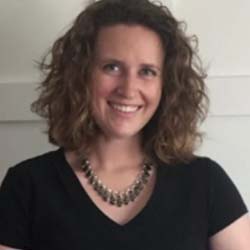
Emiley Eloe-Fadrosh, Staff Scientist, DOE Joint Genome Institute (JGI), Biosciences Area
Q: Where did you visit, and who did you meet with?
A: I was part of a delegation of representatives from national labs in February that visited the University of Texas at El Paso (UTEP) and New Mexico State University (NMSU) in the Southwest. We met with university leaders, students, and faculty during both visits. At UTEP, we met with 20-30 faculty and a large group of students. I toured their facilities and learned about their research activities and programs, from physics to biology. At NMSU, I supported a career fair-type event with over 100 students present.
Q: Why was this visit important for you and your area’s goals?
A: As the JGI is a national user facility, we want to support projects across DOE’s biological and environmental research program. Outreach and engagement are important components of how we operate at the JGI, especially with research teams and universities who may not be familiar with the Lab’s genomic capabilities. I am very interested to learn what science is being done outside of my network and the opportunities for new collaborations. And I found it valuable to be at these campuses in person to see their facilities and connect with faculty to understand their research projects.
Q: How do you think the Lab can further strengthen relationships with MSIs at the Lab?
A: Representing Berkeley Lab was an honor, and it was great to meet the faculty and students at these institutions, as well as others from across the national labs. But this is the first step.
For example, I connected with a JGI user based at UTEP during the visit, and they introduced me to their student who I thought should consider a fellowship program at the Lab. I followed up with this faculty member recently because I think it’s important to maintain these relationships and explore opportunities for joint projects and proposals. The more the Lab can do this through internship programs and building long-term relationships with faculty at MSIs, the more we can build trust.
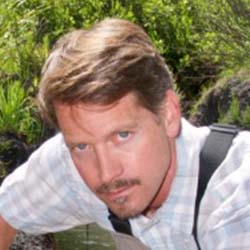
Kenneth Hurst Williams, Senior Scientist, Climate and Ecosystem Sciences Division, Earth and Environmental Sciences Area
Q: Where did you visit, and who did you meet with?
A: This tour was a massive undertaking, and I visited seven academic institutions over two days. The first day was at the University of Texas at El Paso (UTEP) and New Mexico State University (NMSU), where we met with faculty and several graduate students. On the second day started early as we flew to Phoenix and visited Arizona State University to visit the Southwest Integrated Field Laboratory. We then visited Estrella Mountain Community College and South Mountain Community College, then drove to Flagstaff to visit Northern Arizona University and Coconino Community College, which have a large representation of indigenous students. We also met with representatives from the Navajo Nation and Hopi Tribe when discussing the Southwestern Mountains Climate Resilience Center, where I am a co-PI. It was a great opportunity to meet with so many different representatives, faculty, and students. I was particularly heartened to meet with community college students to share various career pathways in science beyond academia directly.
Q: Why was this visit important for you and your area’s goals?
A: For one, of all the STEM fields, geosciences is lagging in terms of fewer numbers of students, faculty, and researchers from underrepresented groups. This presents opportunities for us, and myself as a geoscientist, to try and (hopefully) make some headway in reaching more students from these populations to understand and pursue geoscience research opportunities.
However, this visit was also personally meaningful to me as I grew up in New Mexico, so I have an intimate understanding of the important roles and voices of indigenous stakeholders. I also recognize that many of the research topics I’m interested in – the future of water in the western United States and the impacts of climate change – are outsized for tribal stakeholders and indigenous communities. Participating in these visits provided an opportunity to strengthen existing relationships with tribal communities as part of my work with the Southwestern Mountains Climate Resilience Center, from virtual interactions to direct, in-person tribal engagement. I think it is important to integrate traditional ecological knowledge passed through generations with the type of research funded by DOE to enhance ecosystem understanding and resilience. These visits served as a platform to communicate these goals to audiences familiar and unfamiliar with Berkeley Lab’s and DOE’s work in these areas.
Q: How did you share what you learned from your visits, and what actions are you taking to strengthen relationships with these MSIs?
A: As chief scientist of a watershed project, we are now pursuing the Community College Internship program (CCI) to broaden our talent pipeline. We also met a student at Northern Arizona University whose research aligns nicely with our research focus. We hope to bring them on this fall, if possible, as part of the SULI program. I also sit on the Science and Technical Advisory Committee for the Environmental Molecular Sciences Laboratory, a DOE user facility based at Pacific Northwest National Laboratory. At our last meeting, I shared my experience during these visits and advocated engaging with emerging research institutions and R1 universities with high percentages of underrepresented students in STEM majors. Beyond having a booth, it is important to consider opportunities for user facilities to engage in targeted, impactful outreach to these institutions to promote their capabilities.
I also connected with faculty at NMSU who are interested in having me give a seminar on my research in the fall. I want to leverage this opportunity to share my experience as a Berkeley Lab scientist as a potential career path. I think Berkeley Lab should consider opportunities for visits to MSIs and identify follow-up opportunities that are more targeted, building upon the spirit of collaboration and two-way knowledge sharing.
The Talent Outreach Program is now seeking Lab Ambassadors for fall visits to conferences and MSIs to participate in career fairs and give presentations. You can find instructions on getting approval and more information about event and travel costs on the website. The time commitment for these activities is flexible and dependent on the event. Find out more about the program and consider signing up to be a Lab Ambassador.
